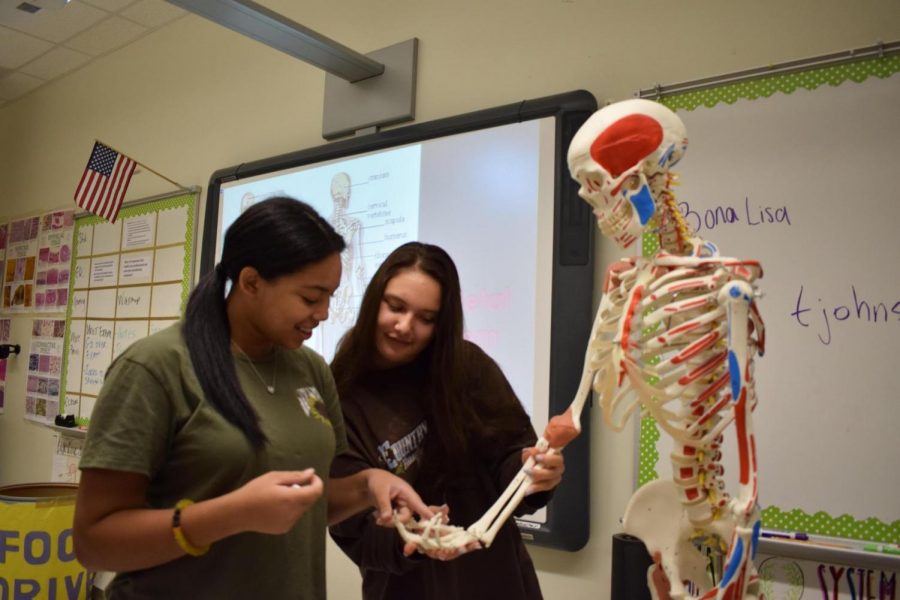CTAE Pathways Department 2.0
Back to the Course Catalog here.
Introduction to Digital Technology
As the first course in the programming pathway, Intro to Digital Technology teaches students about the fundamentals of computer science and the digital landscape.
“This course is about the foundations of programming, network systems, digital communications, etc. It gives a basic overview of these topics,” said Tanaya Dave (‘25).
Students can expect a minimal in-class workload with assignments spread out throughout the week.
“The homework is not much because we get most of it done in class, and there are one to two long assignments for the week. So there is not much work load,” said Dave.
The class is taught by Ms. Dickinson, and most students agree that she is very flexible and patient with her classes.
“[Ms. Dickinson] is very lenient about late work, and as long as you turn [your work] in, she is fine,” said Dave. “There are about 30 people in one class, and she lets us be on our phones and doesn’t really care as long as you finish the work.
The students interviewed agreed that the class is relatively laid-back, but requires quite a bit of self-instruction and should be taken by students who are truly passionate about technology.
“I would only recommend [the class] if you really want to go into tech because, in this course, you will have to learn by yourself,” said Dave.
AP Computer Science A & Principles
Students interviewed responded that the workload is fairly easy, but the assignments are still helpful and fun to work through. Some said that they enjoy the subject because it involves a lot of synthesis and application of prior knowledge to computers, as well as application of the subject to daily life.
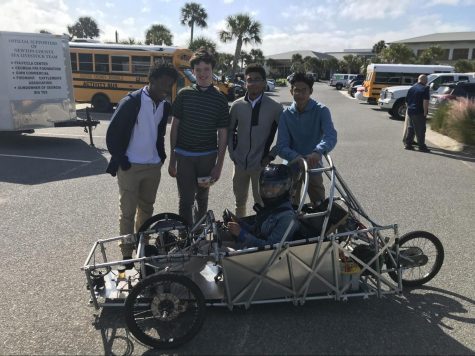
“In this class, you kind of have to take what you know about math, what you know about technology, and combine them together,” said Mikhi Lewis (‘20).
Most of the assignments are through the program CodeHS, with which students teach themselves many skills.
“The work is focused on CodeHS,” said Trinity Vo (‘20).
While the subject matter is fairly complicated, students believe that they have the resources to understand everything, although some units may take a little longer to grasp than others.
“You’ve got to have patience, because everything builds off of itself,” said Isaac Harkins (‘21). “So if you don’t have patience getting through the first couple weeks, you won’t be able to complete the year.”
Prospective students should be prepared for a lot of problem-solving and self-teaching with the CodeHS software, which requires the student to be driven to learn computer science. The workload, according to the students, is not difficult, and getting an A is fairly common.
However, don’t expect to be gingerly guided through the course by the teacher. As Owen Oertell (‘22) put it, “I would recommend this class to [those] who are looking for a challenge.”
Cybersecurity
The Cybersecurity course is one in which students will be able to study the things you are able to do on a computer, such as hacking and viruses, and how those things work in greater depth.
“The class is fun and interesting,” said Ryan Stupart (‘20). “The lessons we are learning in the cybersecurity class are detailed and engaging. So far we have learned things like concepts of network structures to database types. Overall, it’s really fun to learn in cybersecurity.”
With a light workload and interesting topics, Ms. Dickinson creates an engaging class for her students to enjoy and learn useful information for the future.
“I would recommend it to other students, because it’s a cool way like if you’re into engineering or like computers or anything like that like learning about how a computer is made and different things like that I think is very interesting to learn and, you know, have fun,” said Kirsten McMannus (‘20).
With a growing reliance on technology in the near future, students strongly recommend others to take the course if they plan on pursuing a career in computers and software.
“I would [recommend it] because this class has helped me learn the fundamentals of cybersecurity and how to build on them,” said Sanjida Afrin (‘20).
Entrepreneurship
For students interested in business, including “recognizing a business opportunity, starting a business, and operating and maintaining a business,” Chamblee’s entrepreneurship class provides a great opportunity to learn more about what becoming an entrepreneur entails.
“The course is more than about just entrepreneurship,” said Destiny Smith (‘22) “[It’s] trying to teach you what you could do [in the future], but it’s also teaching you how to go into the entrepreneurship field, and all the rules, regulations, and things you should know if you want to be an entrepreneur.”
The class is interactive, consisting of group projects and few formal assessments like tests and quizzes.
“We do have a good amount of projects, like we work in groups a lot in that class,” said Elizabeth Wesley (‘25). “And we [only] really have the final. We don’t have a lot of tests.”
Students often have little homework as most assignments can be completed in class.
“We don’t really get homework unless you don’t finish your assignment in class,” said Wesley. “But our assignments are from this [program] that the school makes us do. It’s called nifty so we do work off that.”
The class teacher, Mr. Jones, and the various students that take it contribute to its overall engaging environment.
“[The class] is kind of entertaining sometimes,” said Hannah Stewart (‘23). “Because [Mr. Jones] like gets people to talk about issues and current issues, and there’s a lot of different people that take the class.”
Intro to Healthcare Science
This class is the first course of the three-course sports medicine pathway. This is the fourth year this course has been offered, and it is generally aimed at freshmen, but there are some sophomores in the course as well.
Most students take this class if they plan on going into a healthcare career, but some students believe the class is too heavily focused on busy work to be useful.
“The lectures don’t feel engaging and the class just isn’t interesting. I thought this might be cool because I didn’t want to take band or something else so I just took it on a whim. I wouldn’t [recommend this class to others] because we really don’t learn anything. We do a lot of textbook graphic organizers and just copy words from the textbook and it feels like a waste of time,” said Will Elder.
Other students found the class engaging.
“There’s a lot of debates about healthcare issues which is definitely fun, and you learn from other people and get to listen to different perspectives,” said Lirina Curi (’23).
The students interviewed agreed that the workload is manageable, and the class is an easy A.
“The class is a lot of book work but that’s just the first year and then after that it’s more hands-on. If you do all the work, then it’s definitely an easy A,” said Elesi Tedjame-Morty.
Engineering (Modeling/Design Path)
Students interviewed enjoy the pathway for a variety of reasons. Some, such as Elisam Bartolon-Cifuentes (‘21), intend to study architecture in the future.
“I’m trying to get into architecture,” said Elisam. “I’m getting more tools, [like] A[uto]CAD, which helps me understand a bit more.”
Others enjoy the creative, artistic aspect of the class, especially because it allows for visual artistry, even though the student isn’t talented in traditional visual arts, like drawing and painting.
Students spend most of their time using AutoCAD and Inventor software, responding that the work is both fun and easy to manage. However, the schedule can be erratic.
As Morgan Breitenbach (‘21) put it, “It depends on the week. Some weeks, we have a ton of work, but other weeks, we don’t do as much.”
Additionally, one student believes that the tests, while not extremely difficult, can be complicated and hard to understand.
Overall, students believe that the workload is about right.
“It’s not a lot, but it’s enough to help you understand,” said Jordan Townsend (‘21). “Even if you don’t understand, [Ms. Gant] gives you time to go to tutoring and all that.”
While most students believe that it is a primarily self-taught course, they agree that the teacher is helpful when needed and gives ample time to grasp the subject.
Prospective students should be prepared for a creative class where they are by far the primary force behind their education.
Colin Hennessy (‘20) advised that one should make sure that this is the aspect of engineering they want to focus on before taking the class, as it is targeted towards one kind of engineering, whereas the other pathway has a broader scope.
“I would say engineering is more varied, whereas this is more targeted towards one thing,” said Hennessy. “[With] engineering being general, electrical, mechanical, and everything, this is just mechanical.”
Engineering (Applications Path)
The four students interviewed generally like the pathway for its fun projects and benefit to their futures. Sometimes, according to Esther Williams (‘21), it’s nice to just do something different.
“It’s a very interactive class,” said Williams. “It’s not like other classes where you just take tests, you actually get to have hands-on experiences.”
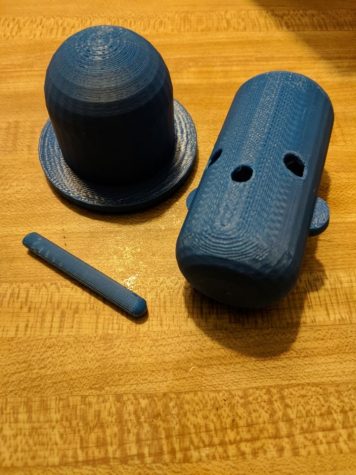
The pathway also allows for creativity in the projects. However, the best projects won’t come in the first year. Sam Grant (‘21) believes that it’s worth the wait.
“The first class, Foundations of Engineering and Technology, can honestly be kind of a drag sometimes,” said Grant. “The second year is much more fun because you’ve got a lot more freedom to do anything. [If you don’t like the first year], I’d say give the second year course a shot because that’s apparently what it’s going to be like in a professional setting.”
By senior year, the skills you have gained over the previous four years are all put to the test in many independent projects. For Mikhi Lewis (‘20), these have been some of the best experiences of the pathway.
“My favorite part about this class is being able to present what I’ve created, all the hard work that I’ve put into a project,” said Lewis. “I’d like to show others and get their feedback so I’m able to either redesign it or go ahead and send it somewhere else.”
All of these projects require lots of work in the shop, some of which must be done after school due to time constraints.
According to Rory Fleming, you have to dedicate a lot of time outside of class if you really want to get all the benefits of it. “If you really want to do this, you have to do TSA, you have to consider whether you’re up to stay late, come during lunch,” said Fleming.
Read more about this class here
Food, Nutrition and Wellness
Food, Nutrition and Wellness is the first course in the three-course Food and Nutrition pathway taught by Ms. Peyton. Students learn more about the nutritional components of the food they eat and the basics of cooking.
“You learn about nutrition and like all the different nutrients you need to have to survive,” said MaKayla Williams (‘24). “You [also] learn about how to properly cook, and like cross-contamination and all that stuff. We learned about how to like prep foods, and we cook, but it’s about a lot of other stuff than just cooking.”

The class is a combination of both bookwork and tests, and hands-on activities like labs. The day’s activities depend on what stage of the unit you are in.
“When we first start out, you do a lot more learning and textbook work so it’s kind of like a regular class,” said Williams. “She does like a quiz for every subject, and we do like pretests first and then we learn stuff after. Then when you try to learn new stuff, you learn how to cook and do certain stuff and it’s really fun. We do a lot of labs which are like cooking and all that and then projects are sometimes labs too.”
Most students found the class environment to be very positive and welcoming.
“[Class culture] is really friendly,” said Simone Williams (‘24). “Everyone talks to each other, and the teacher always greets you. She knows everyone’s name and asks how their day is and stuff.”
Others did not find the class to be particularly interesting, but thought of it as a fun break from their other classes.
“I don’t know if I would call [the class] exciting, but it’s definitely like not boring,” said Sadie Schroeder (‘24). “It’s more fun than a lot of my classes, and I really like the teacher.”
Food, Nutrition and Wellness is perfect for students who wish to learn more about the nutrition side of their personal health and wellness, but students should know not to sign up for this class expecting a cooking lesson every day.
“[I would recommend the class] for sure. But like if you’re only doing it to cook, don’t take it because you don’t just cook. [Nevertheless,] it’s like a really good class to take,” said MaKayla Williams.
Broadcasting
Broadcasting is a three-course pathway taught by Coach Felts. Part of the class is filming the Chamblee student news, but outside of that, students say they have a lot of freedom in writing, filming, and editing their own videos.
“I took the class because, at first, I really liked editing videos. I made them with my siblings just for fun, and it was just a passion of mine and I figured out I could, you know, expand my horizons and my expertise,” said Margret Oliario (‘22).
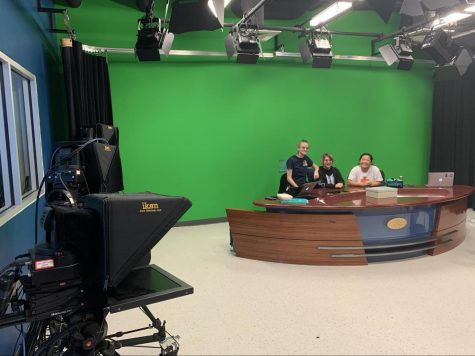
Students can enjoy a light workload of mostly writing their own scripts, being able to express themselves creatively.
“The part of the class that I like the most is editing and writing scripts [because] you get to create your own stories. And sometimes when you’re assigned a task, you get to be [as] creative as you want,” said Simone Latimore (‘21).
Students in the broadcasting pathway are always passionate about their videos, and wish to continue making them even after the class.
“I want to do film and TV and kind of learn about that field, and it’s nice to get to use equipment that real broadcasting uses as well,” said Kathryn Hood (‘20).
Read more about the Chamblee Student News here
Teaching as a Profession
*Note: This class is listed on the counseling class sheets but may not exist anymore or be actually offered next year*
This class is a mixed-level class with Teaching I, II, and III students in the same period. The class ranges from freshmen to juniors and allows students to shadow their favorite teachers twice a week. Students agreed that the class is certainly unique and works well for students looking for a dynamic, hands-on career tech class.
“It’s very different. It’s a pretty unique class and I learn new things, for sure. I’m learning about a lot of parts of the education field that I didn’t know existed, which is cool,” said Samayah Mohamed. “I’d recommend it just because it’s pretty easy if you’re willing to help the teachers. The shadowing is definitely my favorite part.”
Students also agreed that the class felt like it prepared them to explore teaching as a career and prompted them to think about whether teaching is the right career for them.
“I think, in a way, it does prepare you for being a teacher because we get to shadow our favorite teachers for our favorite subjects. So I help Ms. A, and I get to grade her work, see her classes, see how they’re set up, that sort of thing,” said Angel Ngote (‘21). “I took this class at first because I wanted to become a teacher, or just anything with kids, and I think I might still want to, but it just depends on where I end up going or doing later.”
Although students found this class engaging and relatively easy, students also reported difficulties in dealing with the organization of the class.
“The actual class just hasn’t been very good because [the teacher] didn’t know she was teaching it so I feel like if we had a more structured curriculum then it would be a lot better, and more people should join,” said Lynn Miller, who shadows her favorite teacher, Hannah Postema.
The scheduling of the class has also been difficult.
“I would recommend it but I actually don’t know if they’re keeping the pathway next year, that’s why I’m in year two instead of year three right now because they took it away last year but then they brought it back this year. So I would recommend taking it but like, be cautious,” said Ngote.
This class is a good fit for students interested in hands-on exposure to the teaching profession, but students should be prepared to be flexible in the structure of the class and its availability.
Your donation will support the student journalists of Chamblee High School Blue & Gold. Your contribution will allow us to print editions of our work and cover our annual website hosting costs. Currently, we are working to fund a Halloween satire edition.
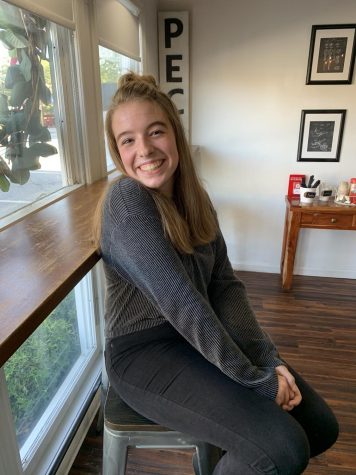
Lucy Roberts is a senior and editor for the Blue & Gold. When she’s not writing op-ed’s or drawing cats, you can find her listening to Taylor Swift and making iced lattes at The Corner Cup. In five years, she hopes to be in a graduate program studying creative writing. This is her second year on the staff.
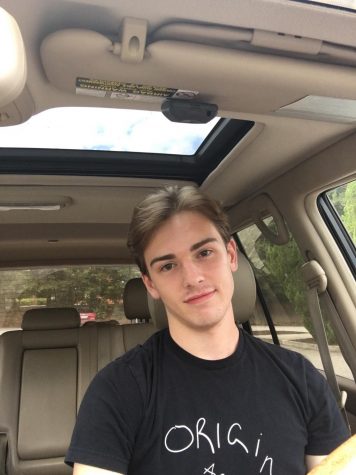
James Hardy is a senior and editor of the Blue & Gold. In his free time, you can find him memorizing baseball stats, exploring local parks, or driving aimlessly instead of finishing his college applications. In five years, he hopes to have finally read the stack of books sitting on his desk. This is his second year on staff.

Shay Martin is a senior, and this is their second year as a writer for the Blue & Gold. Outside of school, they enjoy watching movies, walking their dogs, and listening to music. In five years, they hope to be doing something with writing, no matter what it might be.

Ashika Srivastava is a senior and editor for the Blue & Gold. In five years, she hopes to be recounting the great tale of how she lived through a global pandemic. For her, the movie "Beauty & the Beast" best encapsulates both the beautiful and sometimes scary parts of her Chamblee experience. This is her second year on the staff.

